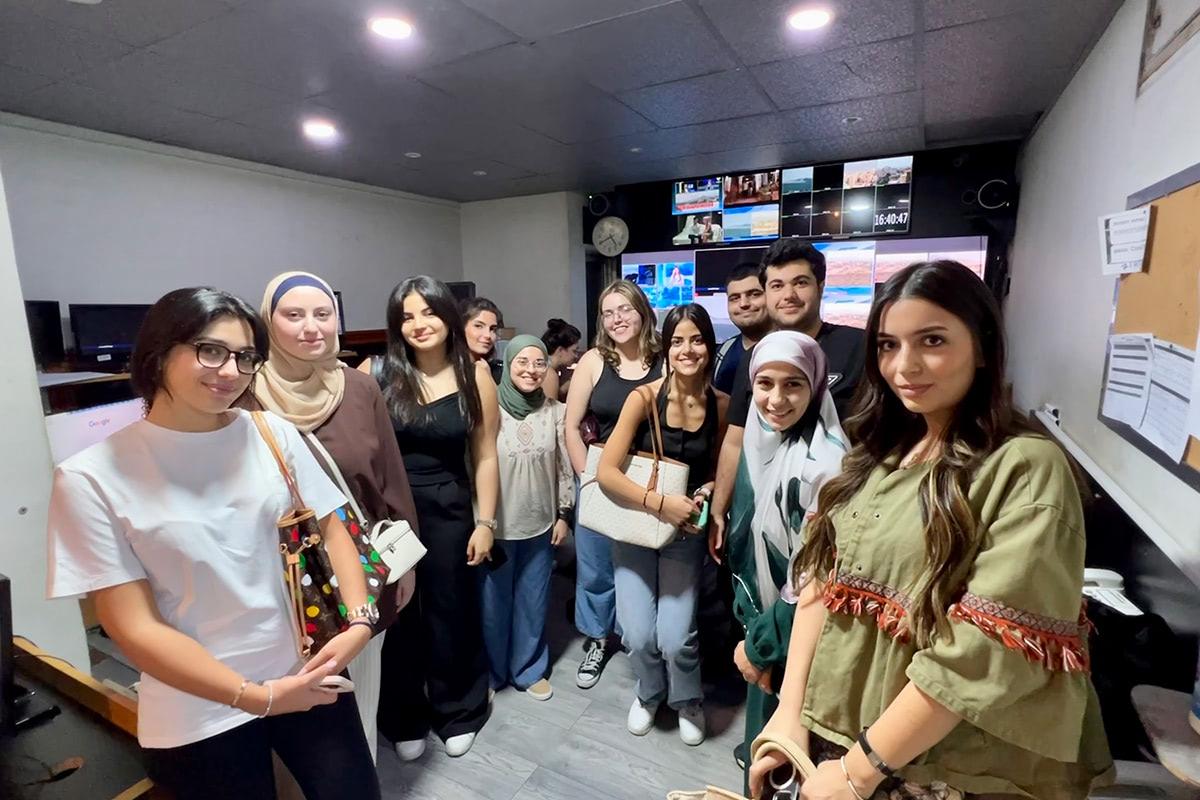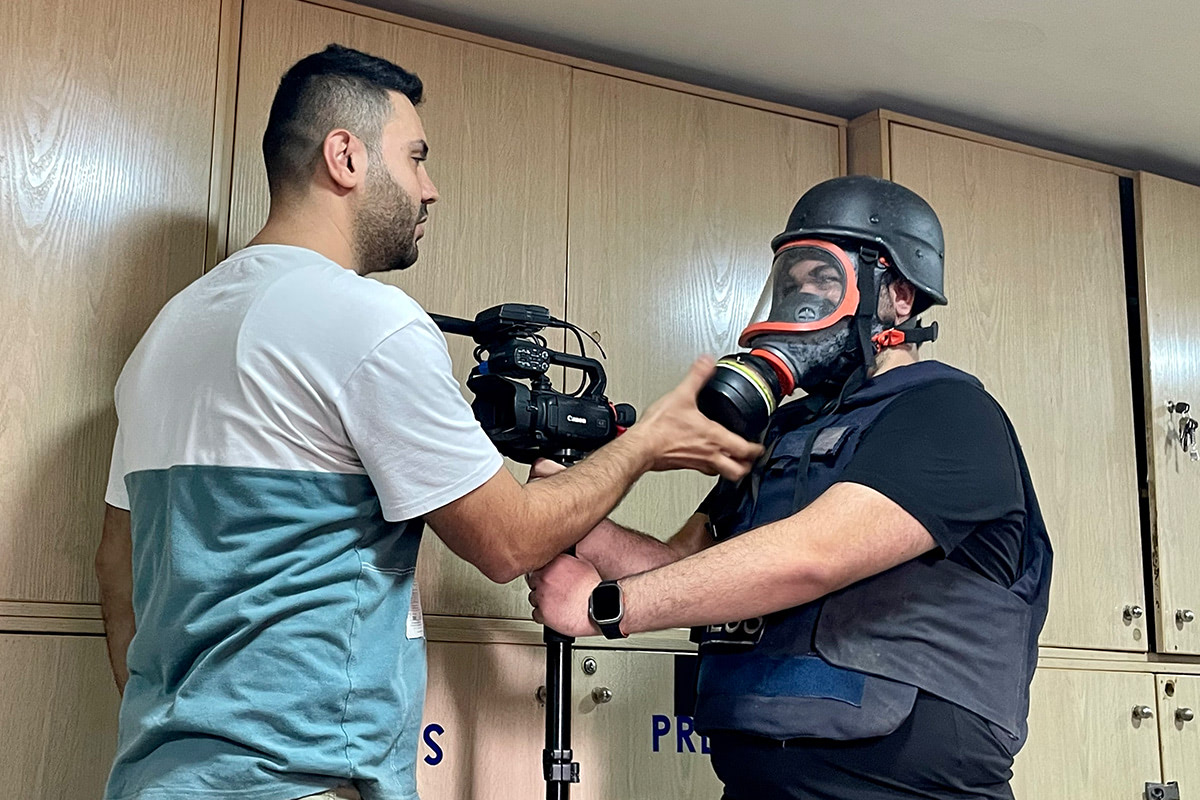Journalism in the Line of Fire
Dr. Gretchen King discusses the dangers, challenges and safety measures for reporters in the field.
Daily, journalists worldwide put their lives at risk to report on events, from conflicts to health crises and natural disasters. The threats they are exposed to in their line of work are many, ranging from physical violence, harassment, imprisonment and even death.
Since 1993, more than 1,600 journalists have been killed and a record total of 533 journalists are currently detained worldwide. This year alone, 44 journalists were killed, 510 were detained and 65 remain missing globally.
Assistant Professor and Program Coordinator of the BA in Communication and Multimedia Journalism Gretchen King sheds light on the dynamic setting of the field and its dangers.
What are the challenges and threats that journalists face nowadays?
Journalists work in one of the most dangerous professions in the world, and, unfortunately, a lot of actors who kill or injure journalists often do so with impunity. Besides the obvious dangers that journalists face in a conflict zone, from getting caught in a crossfire or being injured, they can become targets in kidnappings and assassinations.
The violence that threatens journalists’ safety is not only physical but comes in a variety of forms and from a variety of actors. The threats they are up against can also be digital, mental and emotional.
Online threats range from harassment, intimidation and abuse, to doxing – maliciously posting an individual’s private or identifying information on the internet – and digital violence can often translate into offline violence, contributing to post-traumatic stress disorder (PTSD) journalists may already suffer from the journalism they produce.
Journalists also experience threats to their equipment and the media infrastructure. Assaults on media infrastructure and equipment during conflicts not only impact the journalists’ ability to do their job but also compromise the public’s access to information. Consequently, threats to journalism become ultimately threats to an informed society.
What measures can journalists take to deal with these threats?
Journalists should always have a safety plan. Anything can happen at any time, even in what may appear to be a safe space. The point is, wherever a journalist may be reporting, a scene is evolving, and it can evolve into different kinds and levels of violence, be they physical or psychological. Journalists are always at risk of facing a situation, even in the most mundane assignment.
So, they should conduct a comprehensive threat analysis to anticipate and navigate potential dangers in their environment. They should follow safety procedures such as using protective gear, noting a lawyer’s contact information in case of arrest or detention and protecting their equipment and footage.
Heightened safety awareness during coverage of natural disasters or crises is also crucial. This not only includes adhering to ethical interviewing conduct but also having adequate first-aid training which can be critical in situations where they may be the first on the scene and have to take life-saving measures until professional first responders arrive.
After reporting on violent incidents on the ground, journalists should also be prepared to mitigate any kind of PTSD by seeking help where needed and recognizing the symptoms.
Are there any laws that enforce the rights of journalists?
Laws that guarantee the rights of journalists do exist. The Arab Charter on Human Rights highlights the rights to health, education, freedom from torture and ill-treatment, personal liberty and security, along with various other fundamental rights. We also have the Constitution and press laws in Lebanon, but as with any kind of legal environment, laws are only enforced if there is political will.
Having said that, concerns over assailants on journalists often escaping accusation or conviction have prompted certain entities like the Committee to Protect Journalists to keep track of journalists who have been threatened with violence or killed as a result of it. Nonetheless, accountability and potential change can only be achieved by a political resolve to impose sanctions on the entities perpetrating violence against journalists.
How does LAU prepare its students for the profession?
We want to encourage students who choose multimedia journalism as a major to pursue it with absolute freedom and passion, but we don’t want them to put themselves in danger, either. We can’t guarantee safety because we’re not in charge of the working environment, but we can certainly guarantee an education that will make journalists think and act in safer ways in the field.
We expose our students to concerns about their safety across all courses in communication or multimedia journalism because these are public-facing careers.
We have also introduced a new course on Journalism Safety in collaboration with the Samir Kassir Foundation (SKF). We implemented the Arabic adaptation of the James W. Foley Legacy Foundation Journalism Safety Modules – supplemental resources that focus on the MENA region – in the program’s curriculum to provide handbooks on journalism safety in an educational setting.
There is a growing trend among media organizations and press unions to advocate for mandatory safety training for their members, so undergoing such training at university is an advantage, and can help them meet the requirements for professional accreditation.
The new course also aims to instill the humanitarian aspect of the work into our students because, in the end, it is not about capturing the most compelling photo or soundbite; it is about being a responsible, compassionate individual who can make a difference in times of crisis.
Does the program address the importance of ethical journalism in traumatic events?
Trauma-sensitive approaches – ethical considerations when covering events – are covered in several multimedia journalism courses. Protecting human life and the ethical treatment and responsibility that journalists have to someone who is suffering come first. The journalism safety course impresses on the students the need to go beyond situational awareness and prioritize the safety of the individuals they interview. Their approach to interviews should not only be ethically sound but also trauma-sensitive.
Overall, the Multimedia Journalism program – grounded in LAU’s mission and values – offers a holistic education through engagement in civic responsibility and social justice as well as advocating for values of peace and democracy through the job. With a focus on student-centeredness, the program contributes to the university’s overarching goal of enriching the educational experience of its students and creating a conscious and ethically grounded community of competent journalists dedicated to their profession.
This interview has been edited and condensed for the sake of clarity.

